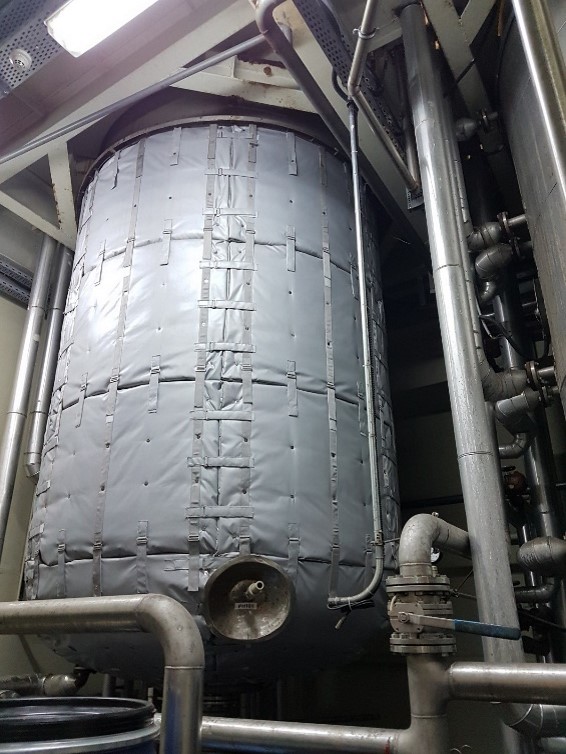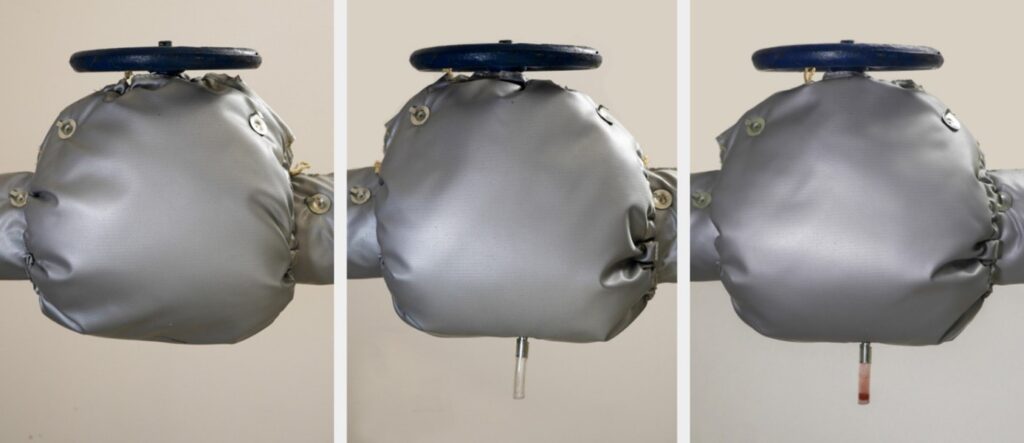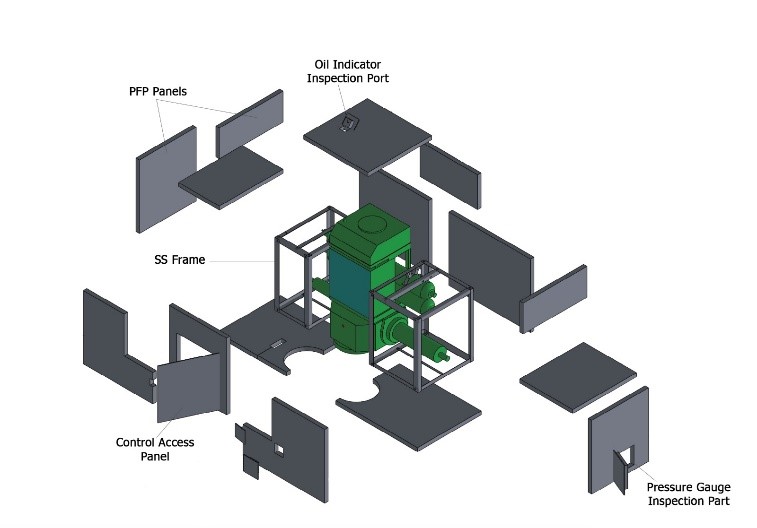Application Of Flexible Insulation Jackets Within Passive Fire Protection Systems
Fire safety in industrial facilities is of great importance in terms of reducing operational risks and safety of employees. Since “pool fire, jet fire, explosion and BLEVE” cases are always among the possible risks in industrial facilities where flammable and combustible dangerous materials are used in standard processes such as storage, processing, and transportation. Therefore, serious consequences such as loss of life, chemical spills, environmental and air pollution, toxic fallout, injuries, property loss and loss of process (and business) continuity are very likely to occur after these incidents.
The potential consequences of fires in industrial facilities are very serious and strict fire safety protocols and passive fire protection systems are required to prevent or contain such incidents. Passive fire protection systems limit the spread and damage of fire, making the facility safer in the event of a fire. This article discusses the application of flexible insulation jackets used for passive fire protection in industrial facilities.

Şekil 1. Sökülebilir PFP Ceket Seti
What are Flexible Insulation Jackets?
Flexible insulation jackets are special insulation systems made of components resistant to high temperatures and chemical abrasives. These jackets are customizable products that wrap in-plant components such as pipelines, equipment and tanks and are used specifically for heat, sound and fire insulation.

Şekil 2. Reaktör PFP Sistemi
What are Passive Fire Protection Systems?
“Passive Fire Protection” (PFP) systems are systems that aim to keep the spread of fire and damage within the facility under control. It consists of components that prevent fire penetrations and rapid spread of fire by dividing the building plan into certain small zones within a certain architectural structure (building, warehouse, etc.). In industrial facilities, equipment such as tanks or heat exchangers, pipelines, on-line fittings (valve, flange, etc.), instruments and also structural steel construction (piperack, etc.) components are equipped with PFP systems. In facilities equipped with PFP systems, suitable conditions for evacuation and fire intervention and most importantly TIME are gained. For this reason, PFP systems are the most effective solution to minimize the risk in all industrial facilities where flammable and/or combustible materials are used or stored in standard processes or to minimize damage even if the risk occurs.
Passive Fire Protection Purposes of Flexible Insulation Jackets:
Insulation: Flexible insulation jackets are made of materials resistant to high temperatures, preventing heat transfer to the surrounding areas by insulating the hot surfaces in the facility.
Limiting Fire Spread: In the event of a fire, flexible insulation jackets can help contain the fire by preventing the spread of flames and heat.
Limiting the Effect of Fire on Equipment: A component (actuator, heat exchanger, tank, cable trays, steel construction, etc.) equipped with a flexible insulation jacket prevents flames and heat from damaging the relevant component for a certain period of time. In this way, valuable TIME is saved and the equipment is prevented from being damaged by the fire until the intervention.
Controlling Chemical Leakages: Flexible insulation jackets can help control potential chemical leaks in pipelines and equipment within the facility. Thus, the risk of leaks causing fire is reduced, and in case of a possible fire, the effects of the fire are prevented from increasing exponentially due to these leaks.

Şekil 3. Drenaj Tapası ve Göstergesi
Application Steps:
Risk Assessment: The potential fire risks within the facility are evaluated and it is determined which components should be protected with flexible insulation jackets. In terms of human and environmental safety in general and process safety in particular, it is necessary to determine the risky situations in the facility well, to determine the appropriate measures for these risks by experts in this field, to use certified products without quality doubt and to take the necessary precautions.
Material Selection: Materials with suitable temperature and fire resistance for a certain period of time (30 minutes, 60 minutes, etc.) according to the relevant standard and resistant to chemical effects are selected.
Installation: Flexible insulation jackets are applied to in-plant components with appropriate assembly methods under competent supervisory control. Correct fitting ensures the jackets work effectively.
Periodic Controls: The applied flexible insulation jackets should be checked preferably annually. The jackets those have been disassembled for maintenance and similar interventions or damaged due to external reasons should be intervened immediately.
Post-Fire Controls: If a fire has already been occurred in the facility, the condition of the flexible insulation jackets after the fire should be checked and any damage or abrasion should be immediately intervened.

Şekil 4. Örnek Tasarım
Conclusion:
There will always be a fire risk in industrial facilities where flammable and combustible hazardous materials are used or stored in standard processes. These risks may be due to many different reasons, depending on the characteristics of the facility. First of all, it is a must to take the necessary measures to prevent the fire and be prepared in case it does. Passive fire protection systems in industrial facilities become more effective with the use of certified flexible insulation jackets without doubts of quality. These jackets are made with materials resistant to high temperatures, preventing heat transfer during fire, protecting the relevant component for a certain period of time and keeping the spread of fire under control. The correct selection, installation and periodic maintenance of flexible insulation jackets are of critical importance in terms of facility safety.
